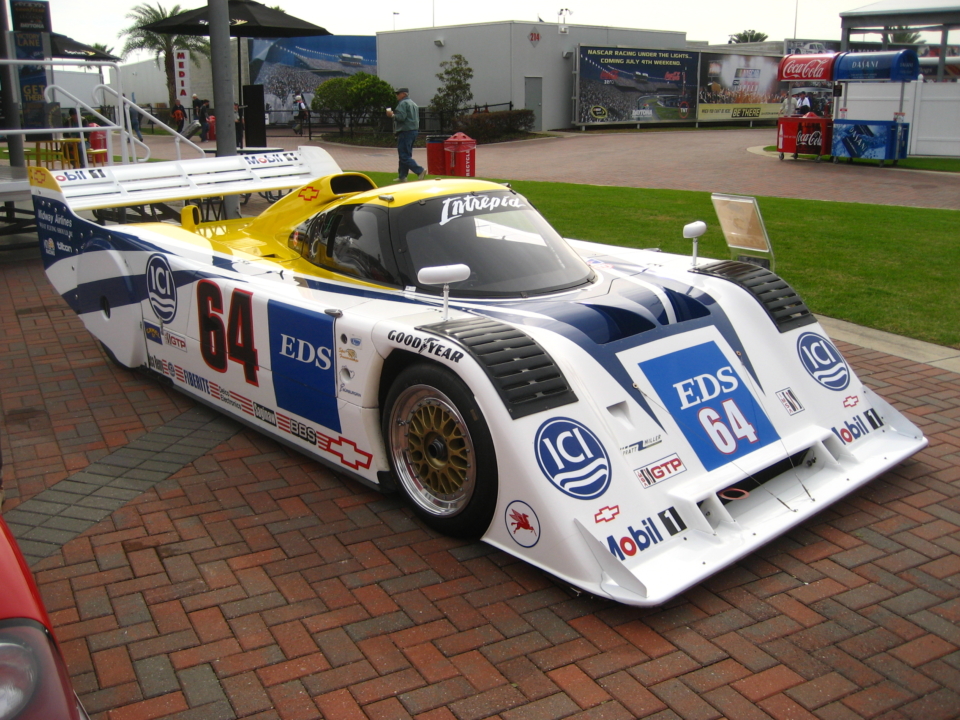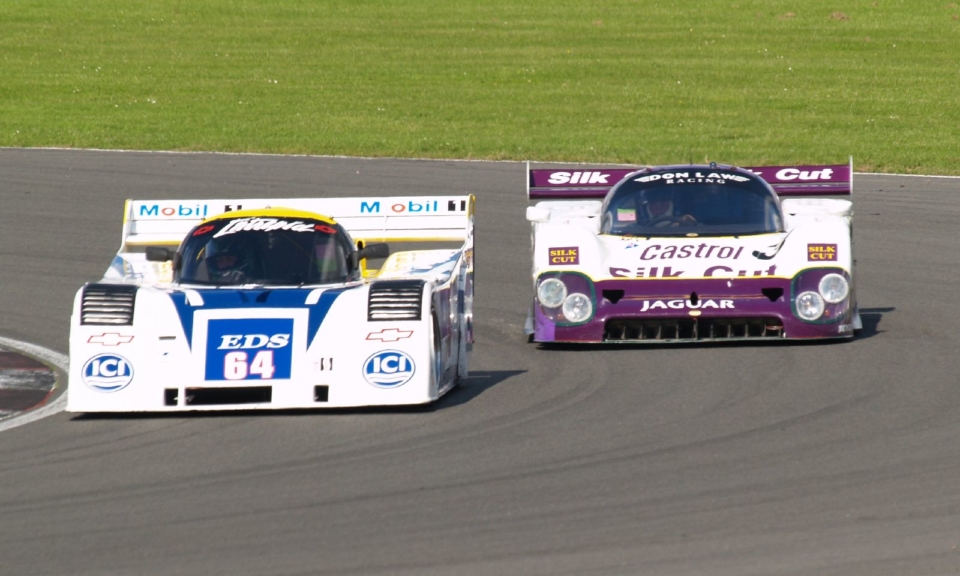If it wasn’t the best American answer to the largely German or Japanese entrants dominating IMSA GTP in the late eighties and early nineties, the Intrepid RM-1 was certainly the best sounding. Contrasted against the muffled barks of the turbocharged competition, the thunderous rumble of the RM-1’s small-block Chevy sounds like Armageddon.
With some respected names like Riley, Pratt, and Miller on board, the team behind the Intrepid RM-1 set out to build a mid-engined GTP racer that could take on the factory teams sweeping the series. Designed mainly to develop as much downforce as possible, they shaped the carbon fiber and aluminum monocoque, as well as the onboard suspension, to maximize the room available for massive underbody tunnels. Unfortunately, this single-minded approach limited the car’s potential at certain circuits.

Those distinctive wheel covers chopped two seconds at Miami during early testing. Photo credit: The359/CC-BY-3.0
While the focus on the tunnels paid off; the car developed some 8,800 pounds of downforce and 3.5 G’s of cornering, it generated too much drag. Its top speed of 187 miles an hour paled in comparison to the contemporary XJR-10’s 212 miles an hour. For that reason, it was never a contender at the faster tracks—it never raced at Daytona, and only raced at Sebring once. However, its responsive, tractable powerplant made it a force to be reckoned with on tighter courses. Its only victory came at the tight, rough, and bumpy New Orleans street circuit in 1991.
Although the team originally intended a 1,000-horsepower Judd V10 to sit between the rear wheels, the IMSA regulations of the time favored production-based motors to be used. For that reason, they opted for a 7.3-liter, Katech-built SBC making somewhere around 800 horsepower. Unfortunately, this left the car underpowered according to its original design specifications, and, therefore, never had the power to push through the drag caused by the wild aero kit.
That wasn’t the only setback the RM-1 endured in its beleaguered life. Hindered significantly by the regulations which restricted carbon brake discs, the Intrepid couldn’t quite take full advantage of the downforce and braking potential it possessed. To complicate matters, perhaps with a touch of irony, it wasn’t built to withstand the stresses brought on by so much aerodynamic grip. At 170 miles an hour, the Intrepid weighed somewhere in the vicinity of 10,000 pounds—a figure which exceeded the strength of the rear suspension.
At Watkins Glen in 1991, Tommy Kendall was in hot pursuit of Geoff Brabham when his RM-1’s left rear suspension collapsed and fired the car into the guardrails at some 140 miles an hour. Though Kendall’s life was saved by the carbon monocoque, the impact shattered both his ankles and broke his right leg in two places. This violent crash soured the car’s reputation, cut some funding, and ultimately hindered its development. Though strengthened uprights helped the later versions of the RM-1 withstand the weight imparted on it by those intriguing wings and slab sides, it sadly faded into anonymity. However, its odd proportions and intimidating engine note has kept it living in the minds of vintage racing fans all over.






















